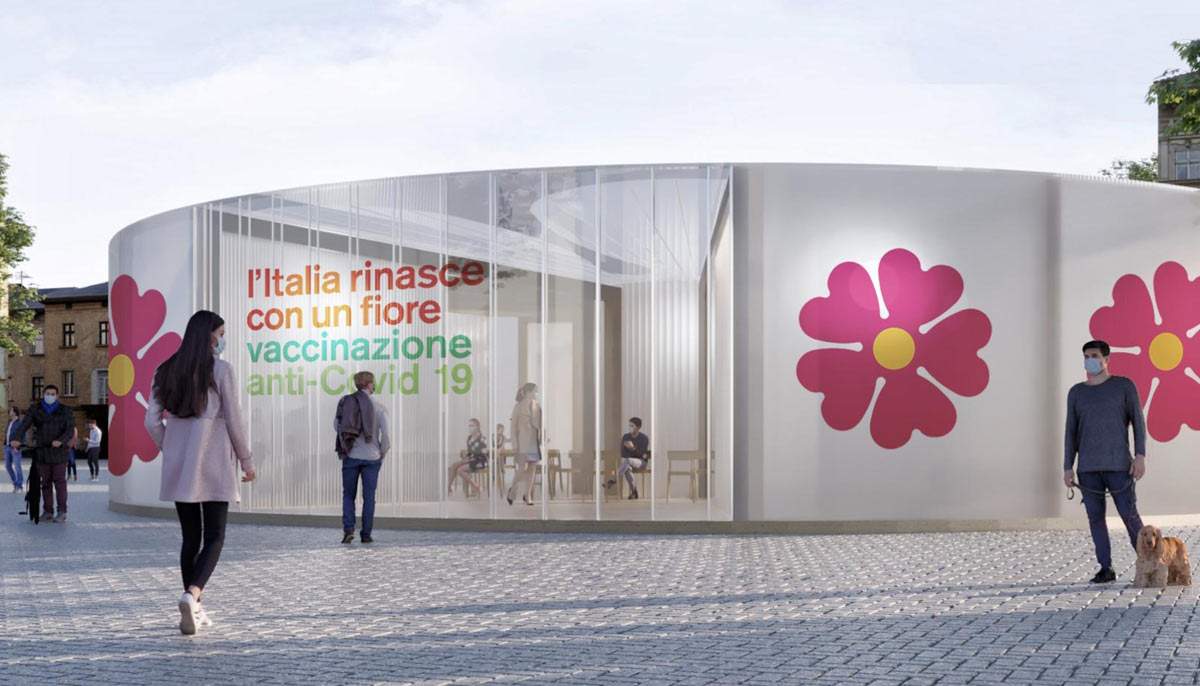Here are the anti-Covid vaccination pavilions. They are the work of Stefano Boeri
Stefano Boeri, owner of the Milan architecture firm of the same name and president of the Milan Triennale, is the architect who came up with the architectural and communication concept for the Covid-19 vaccination campaign. The proposal was made together with a team of consultants, free of charge, and was presented yesterday by the extraordinary commissioner for the Covid-19 emergency, Domenico Arcuri, and Boeri himself. There are three founding elements of the project: the logo of the campaign and its declination; the design of temporary pavilions that will be installed in the main squares of Italian cities (but also in front of hospitals and in sports fields) and within which the vaccine will be administered; and an information totem to be located in public places (hospitals, schools, parks, public offices).
Boeri’s proposal, approved in its general outline and now in the process of further definition, associates the vaccination campaign with a flower, a primrose, an icon not only of the great biodiversity present on the Italian territory but also a symbol, too, of the cycle of nature and continuous rebirth. The primrose is the flower that blooms first after winter and thus announces the awakening of spring. The flower is the common thread of all the elements of the campaign, so much so that it is the very matrix of the circular plan of the pavilions destined for the Italian piazzas where it will be clearly visible from above, being drawn in large dimensions on the surface of their roofs and also on side walls and totems. The piazzas will, therefore, blossom visually with a flower, according to Stefano Boeri’s idea, and the pay-off of the identity campaign is also inspired by this element: “Italy is reborn with a flower.”
The pavilions will have a circular structure, will be dismountable and re-assemblable, and will rest on a prefabricated wooden platform, used for the distribution of systems in the internal halls. The load-bearing skeleton will be made of structural wood, while the outer covering will be made of textile material composed of the combination of different water-repellent, recyclable and biodegradable materials. The roof will house a system of photovoltaic panels to produce electricity to meet the needs of the entire pavilion. The internal partitions of the spaces will be made of prefabricated fabric systems, which are also characterized by lightness, flexibility, sound absorption and transparency.
The organization of the pavilion’s interior spaces includes both the spaces required for vaccine administration and those for acceptance and waiting after vaccination. On the other hand, the central core of the circular pavilion is used as service areas for operators (back office, storage, changing rooms, dedicated toilets, etc.). The elements that characterize the internal layout of the pavilions will also be declined in the administration points identified within existing facilities and buildings.
“We wanted, through the image of a spring flower, a primrose,” says Stefano Boeri, “to create an architecture that would convey a sign of serenity and regeneration. If the virus has locked us in hospitals and homes, the vaccine will finally bring us back in touch with social life and the nature that surrounds us. Vaccinating will therefore be a step of confidence in the future, civic responsibility and love for others.”
The pavilions will begin to be installed in the coming weeks (starting with 300, rising to a maximum of 1,500 pavilions scattered throughout Italy), in time for the start of the vaccination campaign, scheduled for January 15, 2021. The campaign, Domenico Arcuri said, will initially involve 1.8 million Italians, and will start with social and health workers and residents of residences for the elderly. The campaign will have to make use of 3,000 doctors and 12,000 nurses, for whom the extraordinary commissioner has launched a call: additional staff will lend a hand to successfully carry out the vaccination campaign.
 |
| Here are the anti-Covid vaccination pavilions. They are the work of Stefano Boeri |
Warning: the translation into English of the original Italian article was created using automatic tools. We undertake to review all articles, but we do not guarantee the total absence of inaccuracies in the translation due to the program. You can find the original by clicking on the ITA button. If you find any mistake,please contact us.



























